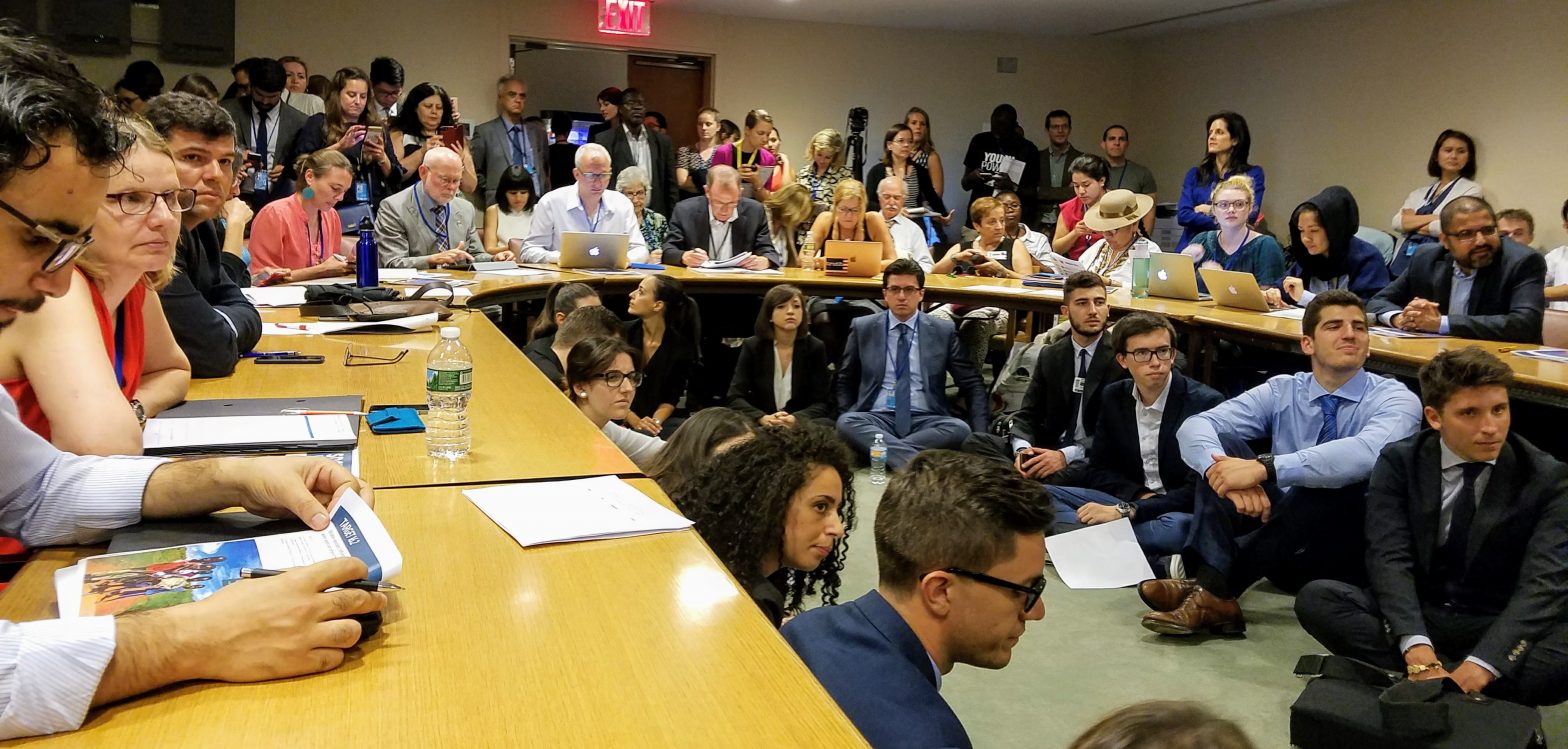From July 10-19, 2017 world leaders gathered at the 2017 High Level Political Forum to review progress on the 2030 Agenda – the Sustainable Development Goals (SDGs). (See the 2017 Report here). This year, the focus was on poverty, hunger, health, gender equality, infrastructure and the seas.
Here are my takeaways, looking through our “bottom-up” development lens:
- Localizing the SDGs: Some countries are beginning to take it seriously. A new report pointed out “At the moment, only 38 of the 63 national reviews … mention subnational government participation in monitoring mechanisms… Just 12 VNRs included data on the proportion of women elected to local government, despite this being a proposed indicator.”
- Youth Rising: (See photo!) It seemed like half the participants I saw were under 30, and many nations brought youth delegates. Despite there being very little focus on youth employment, it’s clear youth are determined to influence this process. Youth were given some opportunities to provide interventions during official programs of HLPF, but their representation on panels was lacking and their participation at HLPF arguably tokenistic rather than formally included.
- Women must be #InTheRoom: Grassroots women’s organization report that they are are consistently left out of decision-making processes. Some key issues, such as Sexual and Reproductive Health Rights and Gender-based Violence, seem to be getting worse, despite pockets of improvements. NGO CSW compiled this useful toolkit for NGOs and Women’s Human Rights Activists in their advocacy at the UN.
- Where is the Data Revolution? Despite years of focus by researchers, the world continues to lack the means for gathering data on most of the SDG targets. This is particularly troubling for community-led development, for which no localized indicators have even been proposed under targets 16.6 (strong institutions) and 16.7 (participatory decision making), according to the SDG16 data initiative. There is, however, an overall index and dashboard system which shows, for example, the USA just behind Argentina!
- LGBTQ+ Rights: The SDG mantra of “leave no one behind” did not explicitly speak of LGBTQ+ individuals – long a taboo subject in international affairs – but the conversation is now open and present at the HLPF, often in the context of gender equality “getting beyond binary.” In September 2016, then-Secretary General Ban called for LGBT equality.
- Migrants and Refugees. Community-led Development has much to contribute to the growing number of displaced persons, migrants and refugees, whose contributions to economic growth appear prominently in the SDGs. Yet, HLPF country reports largely ignored this enormous population. We hosted an event with Church World Service that directly addressed the gaps and challenges in meetings the SDGs for migrants and refugees. The outcome? A need to #GetRealYo about the migration crisis.
- Civil Society: In the face of closing space for civil society, the International Forum of National NGO Platforms calls for a coordinated global effort to build the capacity of civil society to play their key role in achieving the SDGs.
- Face to Face: One big advantage of the HLPF is that civil society actors have a realistic chance of meeting with the senior government officials from their countries – without all the restrictions when heads of state are in town.
- Yay for Web Portals: Kudos to the UN for managing an up-to-date calendar that coordinated both official and side events. The HLPF saw the unveiling of numerous new SDG-related web portals, including MyWorld2030.org, WorldWeWant2030.org, delivery2030.org (for gender equality), Local2030.org, and sdg2advocacyhub.org.
- A Bumpy Ride to Partnership: No great clarity emerged for achieving the vision of a “revitalized global partnership” with key roles for the private sector and domestic resource mobilization. Solving the problem of global tax avoidance and illegal financial flows is clearly the top priority. Aid levels increased in 2016, even without counting increased refugee costs. Leadership for corporate involvement continues to depend on a very small number of champions. The UN Global Compact offers businesses a set of tools here.


